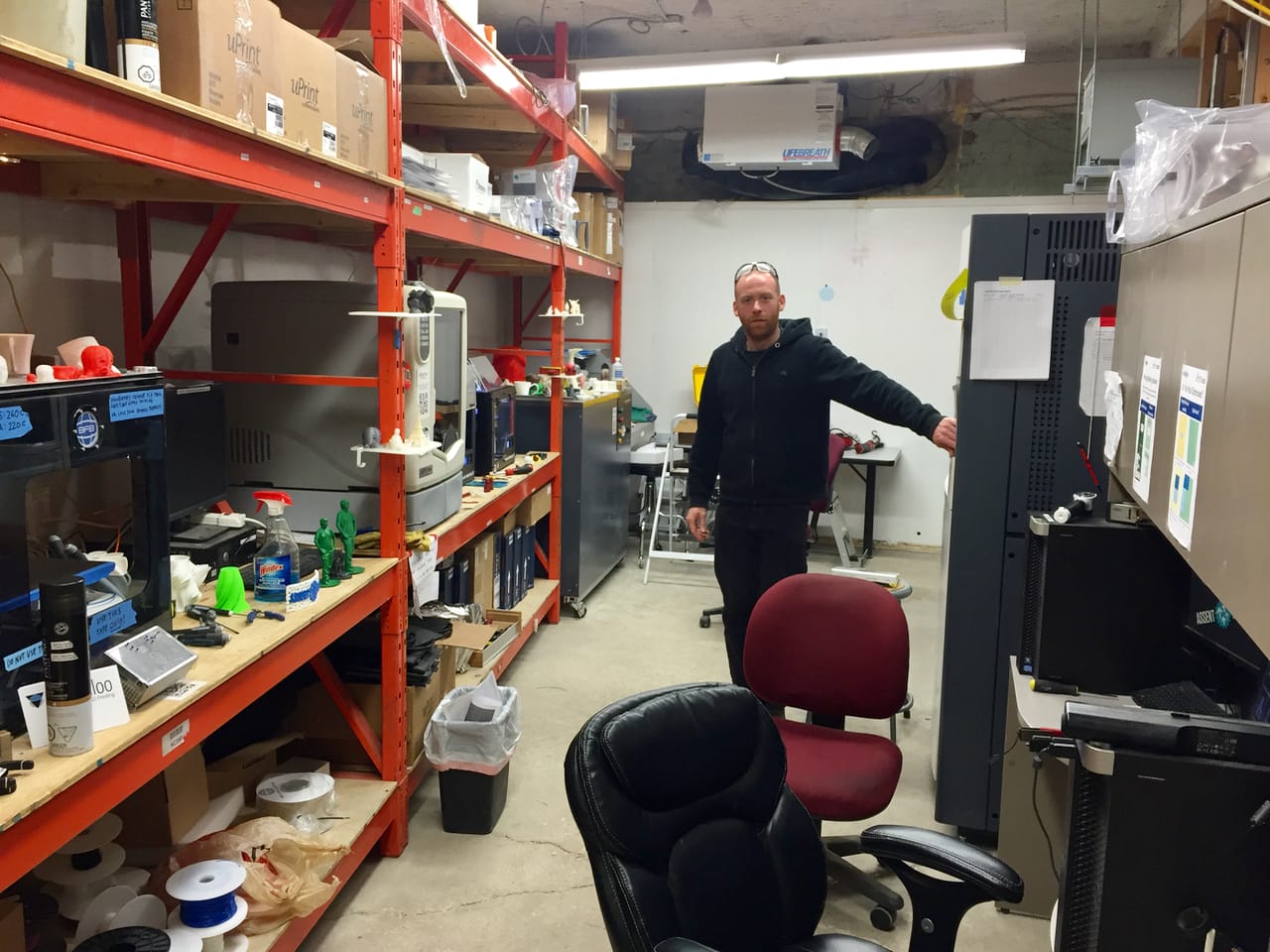
Using a 3D printer (or several) in a makerspace? There are some things to know.
A makerspace is a public space where people share resources, knowledge, work on projects, network, and build. Makerspaces provide tools and space in a shared community environment, often including desktop 3D printers – and sometimes industrial 3D printers.
Expert advisors knowledgeable on the equipment may be available some of the time, but often members get help from other members. The Makerspace principle is of a collaborative space for creatives that has caught hold in education, where the informal combination of lab, workshop along with technology and industry form a space for learning through hands-on exploration.
When Makerspaces have several members using the equipment, including desktop 3D printers, a number of challenges may arise.
Prints are started that may take several hours to complete and members often cannot wait hours for the print to complete. Frequently they leave in hopes of finding their print the next day.
But while they are not present, the print may complete and a second member may wish to use the machine. They may unload the first member’s print so they can start their own. One challenge experienced is the problem of storing the first member’s completed prints. If not done in an organized fashion, they risk being mixed up with prints, getting lost or broken. Worse, the second member may improperly remove it from the machine and break them in the process, particularly if it is a delicate print.
One solution could be a formal “pick-up” bin. A small bin with divided compartments for multiple members prints would more than suffice, given the small number of prints from 3D printers running overnight. Just add a tagging system so everyone knows who belongs to what.
Maintaining a 3D printer takes a lot of work and troubleshooting. For example, you might need to re-level your printer’s plate after somebody bumps into it or clear a jam from the print head’s nozzle after only a few builds. Sometimes builds fail and you have to start over or adjust a design to accommodate internal supports.
While these operations may be trivial for experienced 3D print operators, they can baffle junior members who may abandon the machine rather than dealing with it themselves. The key is to have an open environment where people are comfortable asking questions and learning how to do things right in the process.
Some printers can be temperamental or better suited to more experienced users. Keep in mind the ongoing costs of 3D printing; there’s a surprising amount of labor required to operate machines, maintain equipment and post process prints.
Novice 3D print operators often make mistakes that jeopardize the health of the 3D printer. They may set the temperatures wrong, or not select pathologically wrong object orientations that lead to poor adhesion and print failure. Failures where the print dislodges from the print bed are particularly dangerous to the equipment, as the moving print head may knock it around and get tangled up in some of the printer’s key motion system elements. Best practice would be to ensure users are properly trained in not only the use of the software and machine controls, but also the most effective ways to use the equipment.
While materials (filament) are relatively inexpensive, you still must invest a lot of time in learning how to use the hardware and software effectively. Everything about 3D printing gets easier with time, but at the beginning – a state many maker space members find themselves in – 3D printing still takes a lot of time.
For those makerspaces with resin-based 3D printers, there is another challenge: toxicity. Many 3D printer resins are actually toxic to one degree or another, and as a result they must be handled with care: rubber gloves, cleaning spills are very important. Those new and unfamiliar with resins may not understand this and take unnecessary risks. Good education is perhaps the solution here.
Print settings are frequently a problem area in public makerspaces. Frequently a standalone PC is provided with appropriate software for members to prepare their print jobs. However, makers are often tinkerers, and as such they often tweak obscure print settings among the myriad of options presented in “advanced mode”. These unusual settings are sometimes found by the next person to use the software, often to their dismay when their print fails mysteriously.

My advice is to ensure there is a clear procedure for making changes to default print settings, and to encourage everyone to at least start with the defaults. This is true not only for 3D printers, but all other equipment in a makerspace, such as CNC machines or laser engravers.
Print time is another cost to keep in mind. How do you keep our printers up and running properly, and how do you ensure that all of your members have fair and equitable access, not only to the printer, but also to modeling software and training opportunities to learn how to use it?
There’s no default answer to these questions, but you should consider them and strive to maximize accessibility, if 3D printing is a service we want to continue to offer in makerspaces.
What challenges have you encountered in your makerspace?

